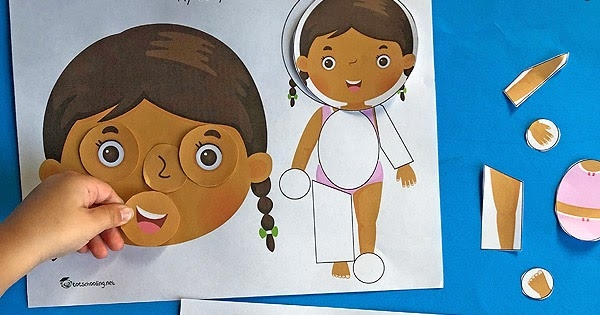Have you ever wondered how you can help your child learn about their body while having fun? Body parts activities for kids are a great way to do just that! These simple and engaging activities not only teach kids about different parts of their body but also help them develop important motor skills and coordination. Let’s explore some fun ways to get your little ones moving and learning!
Math & ELA | PreK To Grade 5
Kids see fun.
You see real learning outcomes.
Watch your kids fall in love with math & reading through our scientifically designed curriculum.
Parents, try for free Teachers, use for free
1. “Spot the Body Parts” Challenge
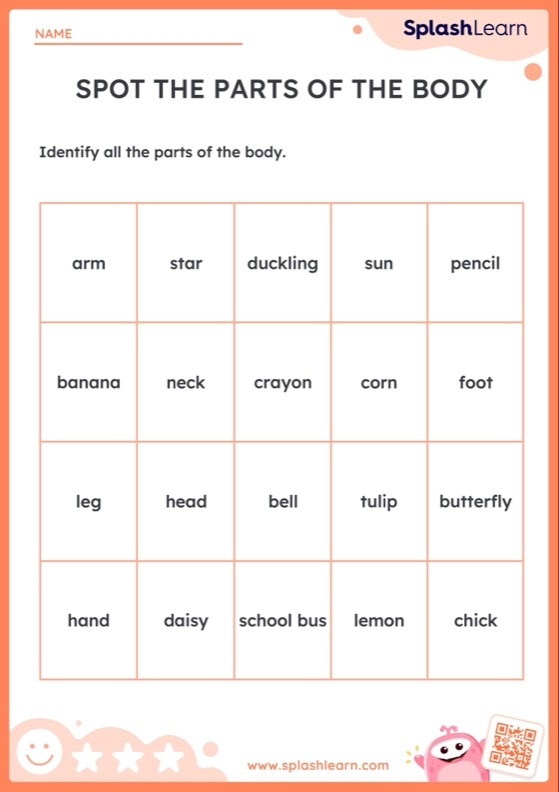
Objective: To help toddlers learn about different body parts using fun and interactive printable body parts activities for toddlers.
How to Do It:
- Look at the worksheet and find the words that are names of body parts.
- Circle each body part you find in the grid.
- Once you’ve circled all the body parts, point to those parts on your own body.
- Review the answers together and talk about what each body part does.
Related Reading: Fun Learning Activities for Toddlers
2. “Whole Body Listening” Match-Up
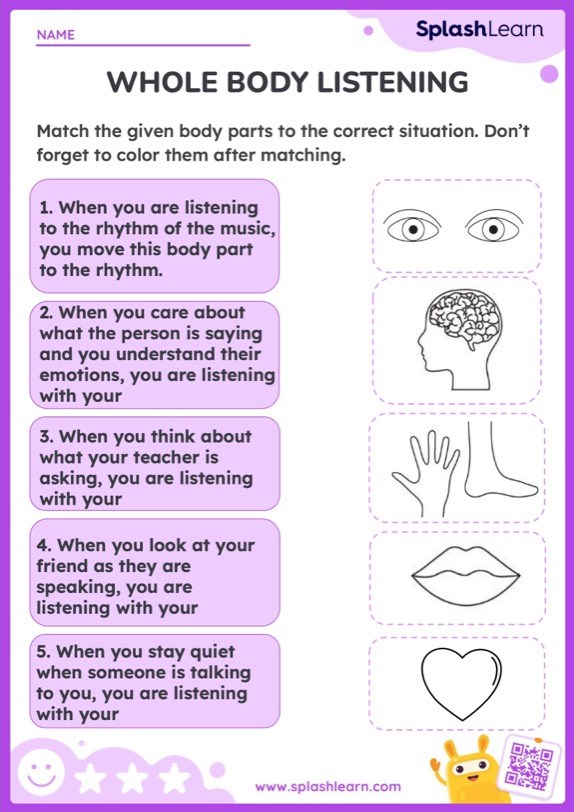
Objective:
To help kids understand how different body parts are involved in listening using a fun matching activity. This activity teaches kids how various body parts work together to help them listen better, making it one of the best body parts activities for kindergarten kids.
How to Do It:
- Look at the worksheet and read each situation that describes a way of listening.
- Match each situation to the correct body part by drawing a line between them.
- After matching, color in the pictures of the body parts.
- Discuss with the children how each body part helps in listening and why it’s important to use “whole body listening.”
3. “Parts of the Body” Writing Practice
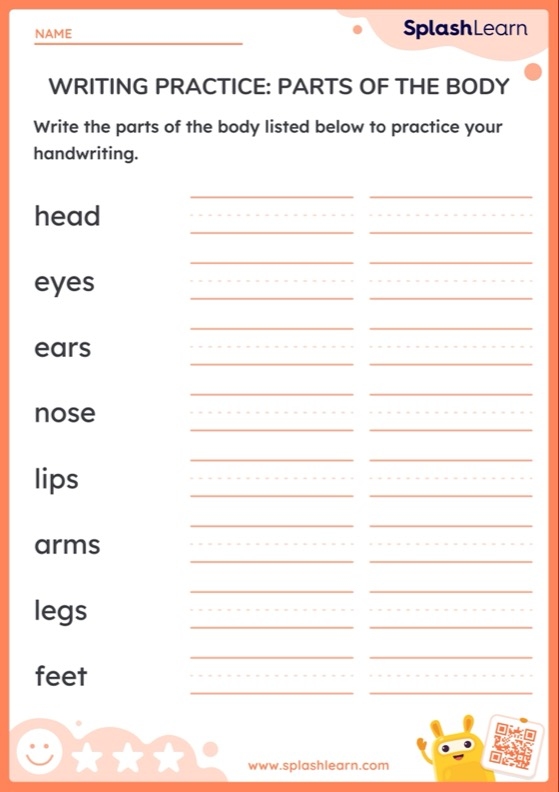
Objective: To help toddlers practice writing and recognizing common body parts, making it a perfect activity for learning body parts for toddlers.
How to Do It:
- Look at the list of body parts on the worksheet.
- Practice writing each body part in the space provided next to the word.
- Say the name of each body part out loud as you write it to reinforce learning.
- After finishing, point to each body part on your own body to connect the word with the physical part.
Related Reading: Best Writing Activities for Kids: Creative Pens at Play
4. Head, Shoulders, Knees, and Toes
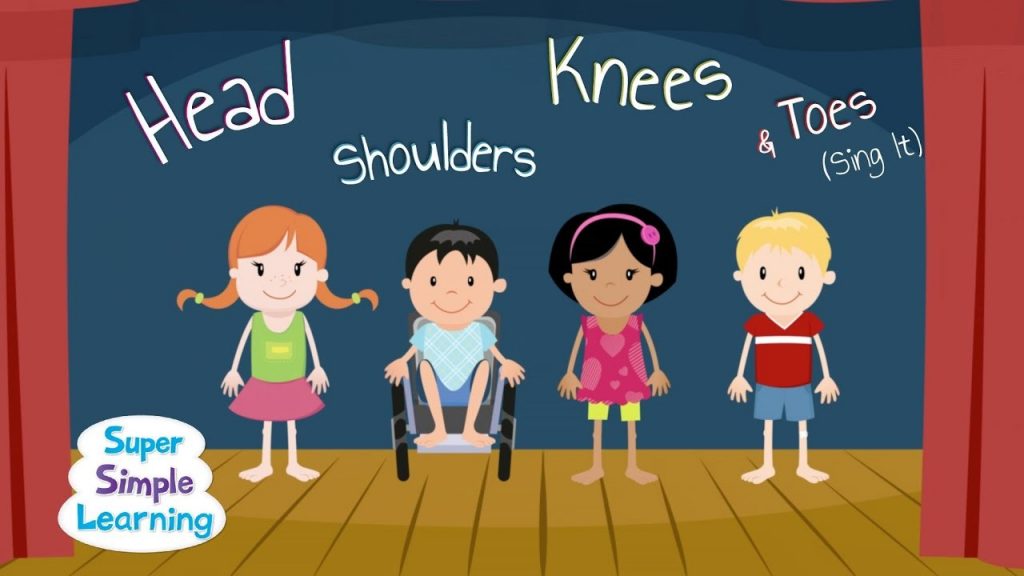
Objective: To help toddlers learn and identify key body parts through an interactive and musical activity.
How to Do It:
- Sing the “Head, Shoulders, Knees, and Toes” song together with your toddler.
- Encourage your child to touch each body part as it is mentioned in the song.
- Repeat the song at different speeds to make it more challenging and fun.
5. Body Part Simon Says
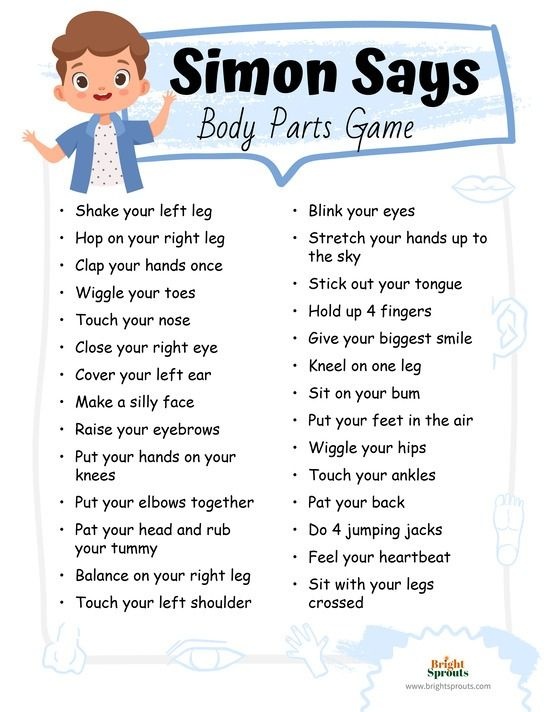
Objective: To help toddlers practice listening and identifying body parts through a playful game of Simon Says. This is a fun way to incorporate body parts activities for toddlers into their daily routine while reinforcing body part recognition.
How to Do It:
- Start by playing a game of Simon Says, focusing on body parts (e.g., “Simon says touch your nose”).
- Give clear instructions and encourage your toddler to touch the correct body part.
- Occasionally, give a command without saying “Simon says” to see if they follow the rule.
Related Reading: Best Listening Activities for Kids
6. Body Part Puzzle
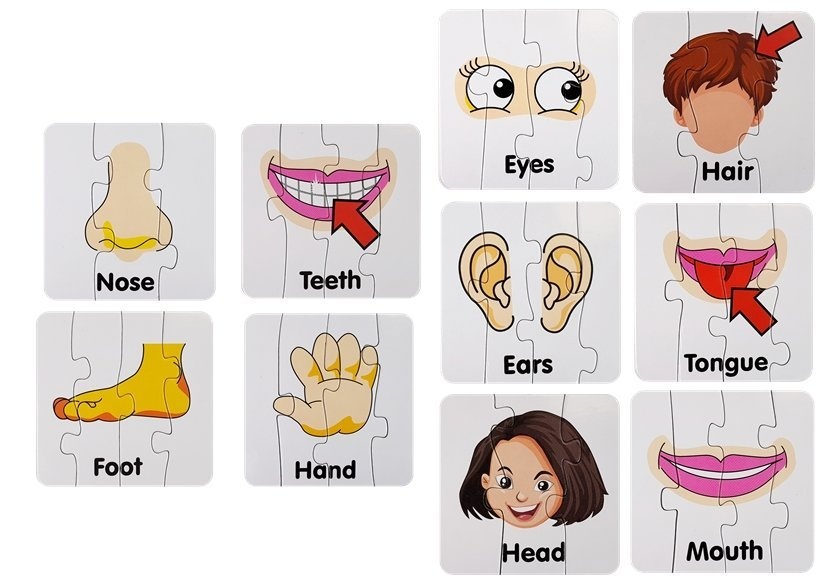
Objective: To enhance toddlers’ understanding of how different body parts fit together to form a complete person. This hands-on approach is excellent for teaching body parts and helping toddlers understand body structure through play.
How to Do It:
- Provide your toddler with a puzzle that features different body parts.
- Ask them to assemble the pieces to create a complete body.
- As they put the puzzle together, name each body part and discuss its function.
7. The Human Body: Writing Practice
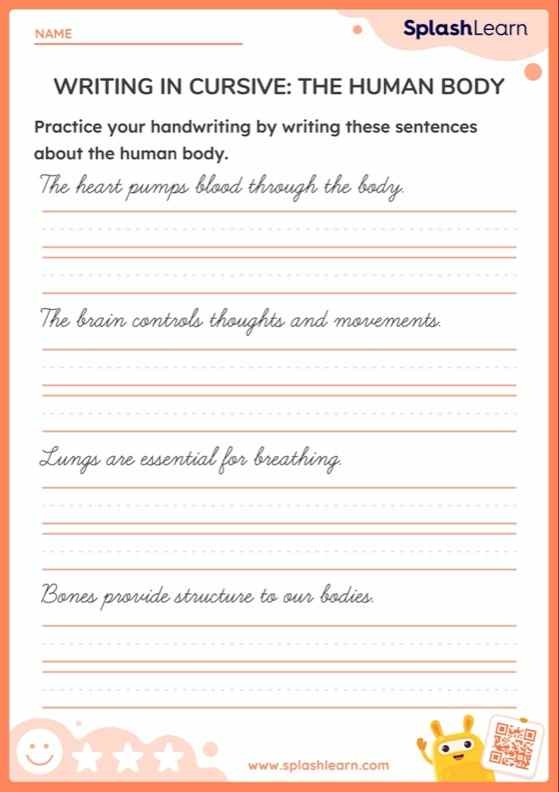
Objective: To help children practice cursive handwriting while learning about important functions of the human body.
How to Do It:
- Ask the child to carefully read each sentence on the worksheet. Then, have them practice writing the sentences in cursive on the lines provided.
- After writing each sentence, briefly discuss the body part mentioned and its function. For example, “The heart pumps blood through the body” can lead to a short conversation about how the heart works.
8. Musical Body Parts
Objective: To help toddlers learn to identify and move different body parts through a fun, musical activity.
How to Do It:
- Play a song and let the toddlers dance freely.
- Pause the music at random intervals and call out a body part (e.g., “touch your elbow”).
- The toddlers must quickly place that body part on the floor or touch it with their hands.
9. Mirror Movement
Objective: To improve toddlers’ observation and imitation skills while helping them learn about body parts.
How to Do It:
- Stand in front of the toddlers and choose different body parts to move (e.g., wave your hand, wiggle your nose).
- The toddlers must mirror your movements exactly as you do them.
- Gradually increase the speed or complexity of movements to keep the activity challenging and fun.
10. Body Part Bingo
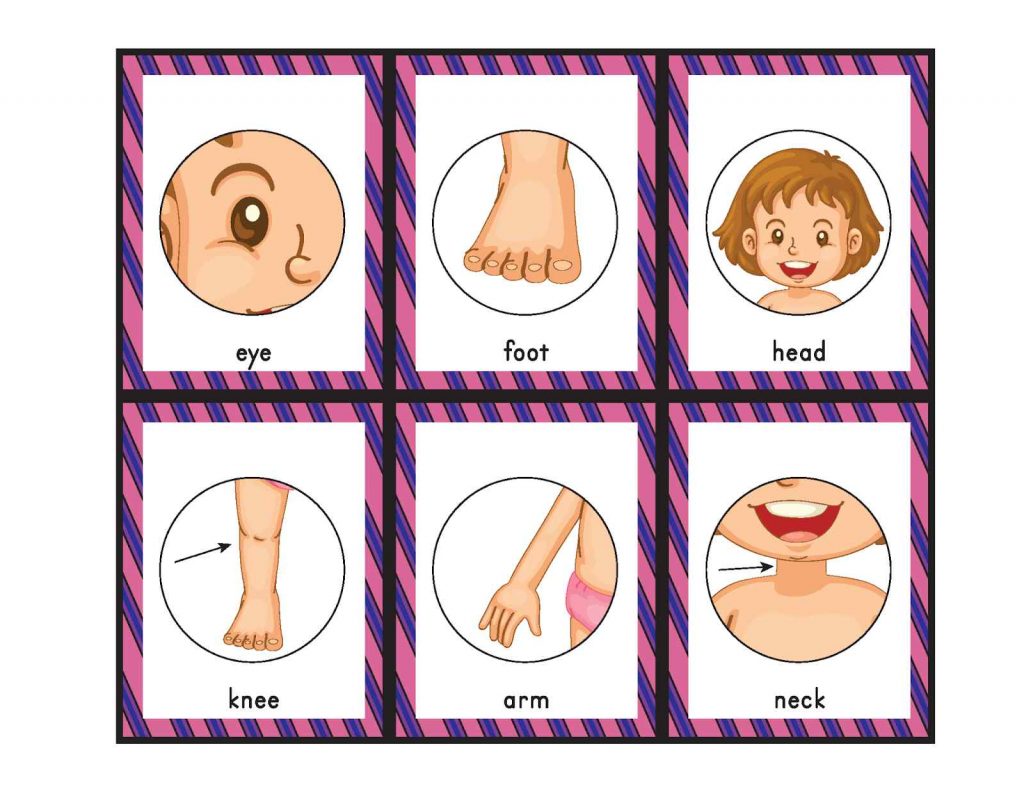
Objective: To reinforce body part recognition in a playful and interactive way.
How to Do It:
- Create bingo cards with pictures or words of different body parts.
- Call out the name of a body part, and the toddlers must find and cover the corresponding body part on their card.
- The first child to cover a row or column shouts “Bingo!” and wins the game.
11. Body Part Storytime
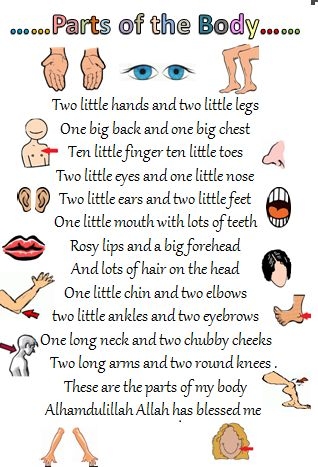
Objective: To help toddlers learn and identify body parts through engaging stories and interactive actions. This activity is an effective and fun way of teaching body parts while enhancing listening skills and encouraging active participation.
How to Do It:
- Choose a story that mentions different body parts, or create a simple one yourself.
- As you read the story, ask the toddlers to point to or move the body parts mentioned (e.g., “Wiggle your fingers” when the story talks about fingers).
- Encourage the children to repeat the actions and words, reinforcing their understanding of each body part.
Related Reading: Amazing Short Stories for Kids
12. Body Part Art
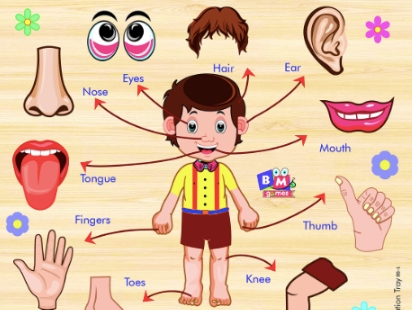
Objective: To help toddlers learn about body parts through a creative and hands-on craft activity. This body parts craft activity not only teaches toddlers about body parts but also allows them to express their creativity and improve fine motor skills.
How to Do It:
- Provide the toddlers with paper, glue, and cutouts of different body parts (like head, arms, legs, etc.)
- Ask them to arrange and glue the cutouts on a piece of paper to create a complete person.
- Once they’ve assembled the body, encourage them to color and decorate their creation.
13. Body Part Freeze Tag
Objective: To help toddlers identify body parts while engaging in active play. This is an exciting way to incorporate body parts activities for toddlers into physical play, reinforcing body part recognition.
How to Do It:
- Play a game of freeze tag where, when a child is tagged, they must freeze and touch a specific body part (e.g., “Touch your knee”).
- To unfreeze, another player must touch the same body part on their own body.
- Continue the game with different body parts until everyone has had a turn.
14. Body Part Drawing
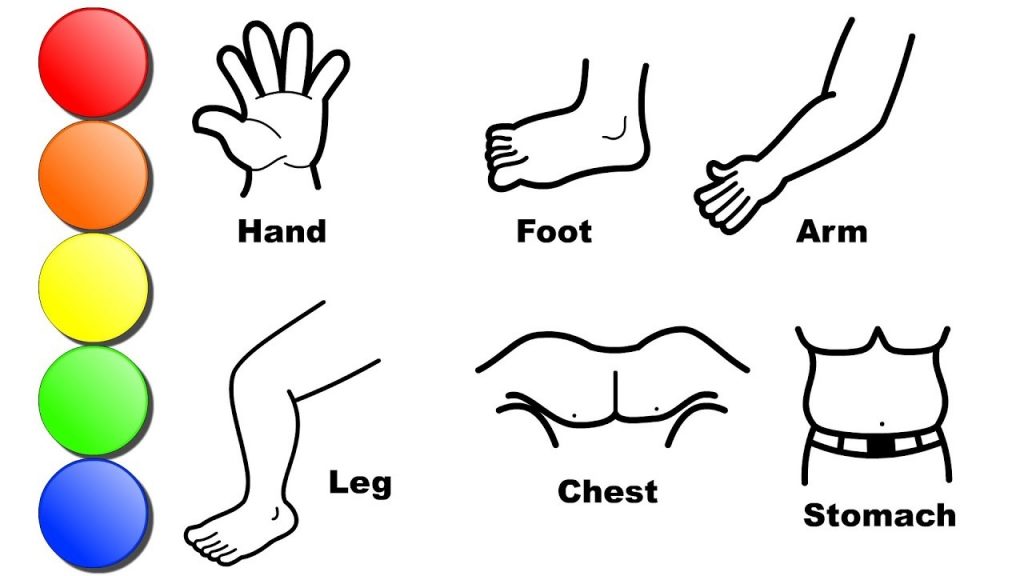
Objective: To enhance toddlers’ understanding of body parts through drawing and following instructions.
How to Do It:
- Provide the toddlers with a blank sheet of paper and crayons or markers.
- Give step-by-step instructions for drawing a person, starting with one body part at a time (e.g., “Draw the head first, now add the arms”).
- As they draw, discuss each body part and its function to reinforce learning.
15. Body Part Twister
Objective: To help toddlers practice identifying and using different body parts while playing a fun and physical game.
How to Do It:
- Create a DIY Twister mat with circles labeled for different body parts (e.g., hands, feet, elbows).
- Call out combinations like “Right hand on the foot circle” or “Left knee on the hand circle.”
- The toddlers must follow the instructions, using the correct body parts to touch the designated circles.
4 Benefits of Body Part Activities for Kids
- Engaging in body part activities helps develop both fine and gross motor skills, essential for tasks like writing, cutting, and running.
- These activities teach kids to recognize and understand the different parts of their bodies, improving their spatial awareness and self-perception.
- By involving multiple body parts in movement, kids learn to coordinate their actions better, leading to improved balance and physical control.
- These activities promote physical engagement, helping children to learn through movement, which is crucial for kinesthetic learners.
Related Reading: Best Activities for Kinesthetic Learners
Conclusion
Body part activities are a fun and effective way to help kids learn about their bodies while improving important skills. By incorporating these activities into playtime, you can support your child’s physical, cognitive, and social development in a natural and enjoyable way.
Related Reading: Best Science Activities for Curious Preschoolers
Frequently Asked Questions (FAQs)
How do I teach my body parts?
You can teach body parts by using songs, games, and interactive activities like “Head, Shoulders, Knees, and Toes” or body part puzzles to make learning fun and engaging.
How do you introduce a body part lesson?
Start with simple, familiar parts like head, arms, and legs, using songs or visual aids, and gradually introduce more as the child becomes comfortable.
When should you teach body parts?
You can start teaching body parts as early as 1 year old when children begin to recognize and identify different parts of their own body.

















